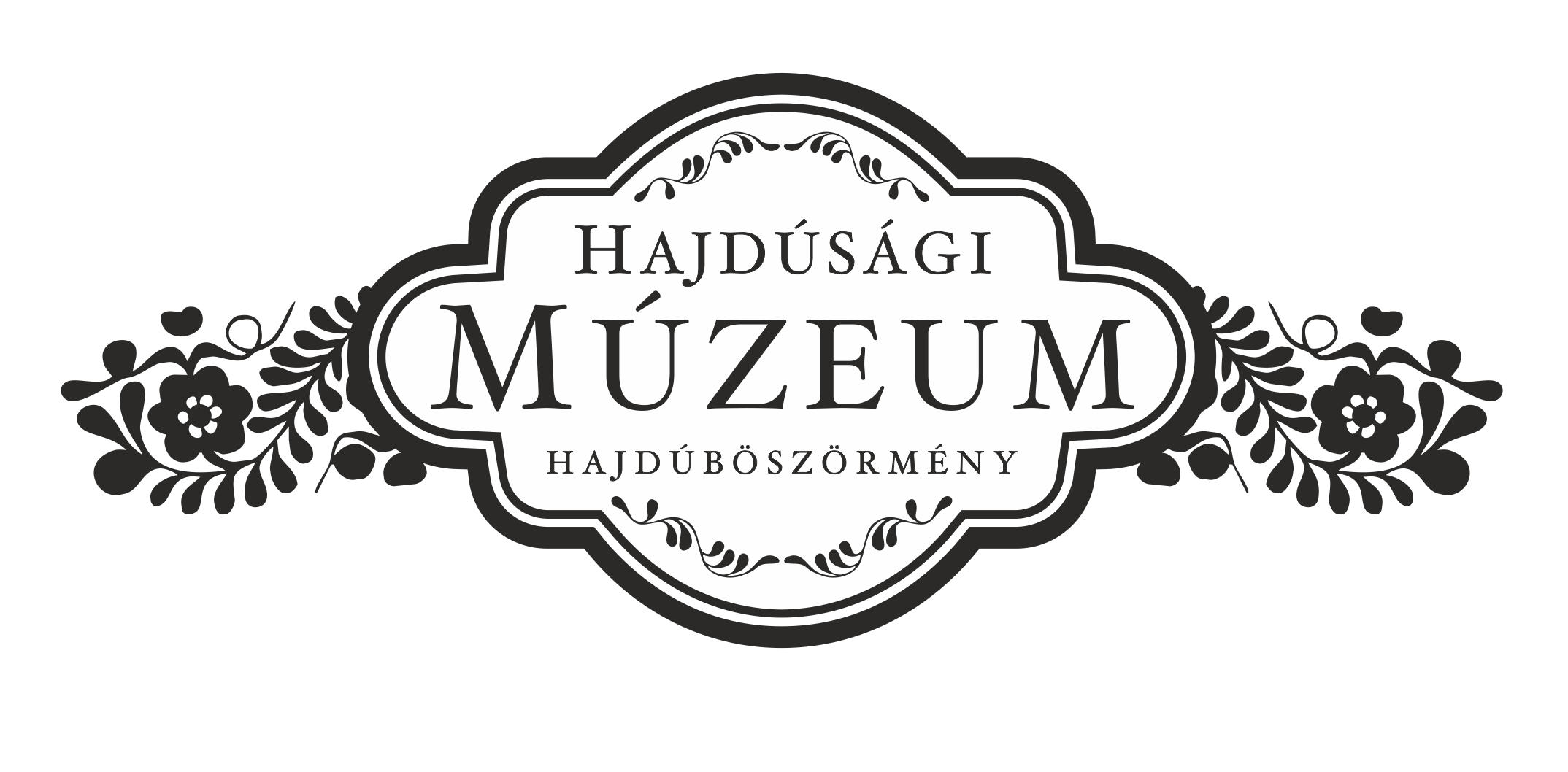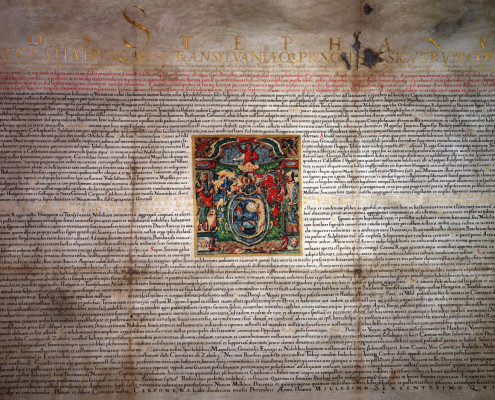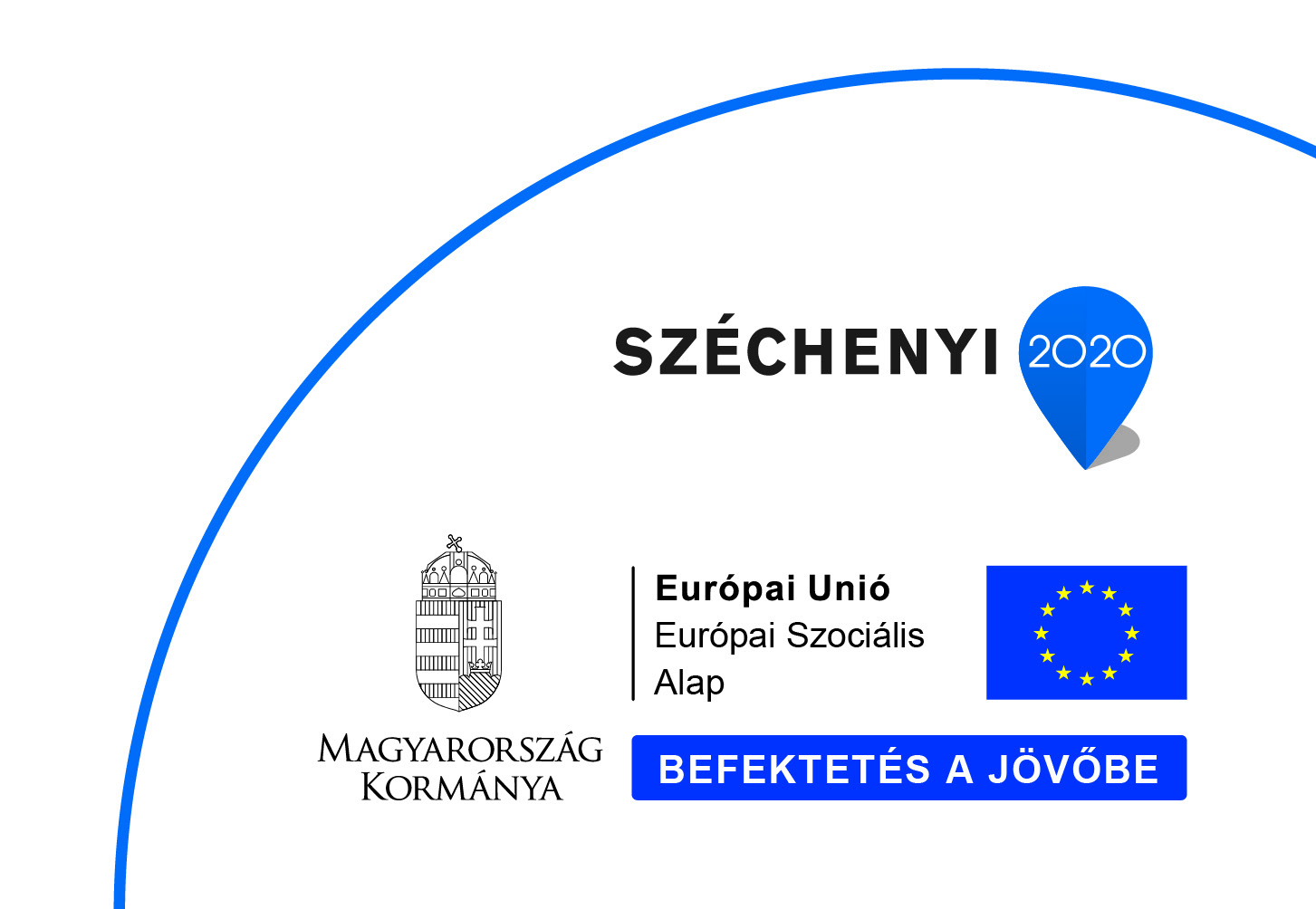Böszörmény village in the late Middle Ages
There is obvious evidence that Böszörmény village, peopled by Ishmaelites in the Árpád Age, was destroyed during the Tartar Invasion. The first written document from the period following the ravage mentions it, in 1300, as an uninhabited settlement (Bezermeteluk/Böszörménytelek). However, its next mention in 1325 describes the place as a prosperous settlement with the right to hold national markets, within the estate of Dózsa Debreceni. It became a market town realizing significant commercial activity and obtaining an important income from the duties levied on transited goods throughout the medieval period.
The dying out of the male line of the Debrecen family in 1404, the estate – including Böszörmény, as well – devolved upon the king, Sigismund of Luxembourg. A charter dating 1411 reveals that at that time, it had already attained country market town (oppidum) status.
Sigismund transferred the territory to the despots of Serbia, which supposedly resulted in Rascian population arriving at the area. Then, it was given to János Hunyadi, and formed part of the estate of the Hunyadi family up until the death of his grand-son János Corvin (1504). The majority of the town came into the possession of János Szapolyai in 1511 and the Báthory family.
Who were the Haiduk?
The urbanization and the population growth in Western Europe in the second half of the 14th century increased the demand for meat, which resulted in an extended grey cattle husbandry and its transport to abroad.
This economic boost entailed the emergence of a group, the Haiduk, who were charged with droving the cattle herds west, leading and guarding them. In the beginning, the group bore a double function: part of them drove the cattle west while another part were armed and escorted the herd. According to present knowledge, their denomination originates from the Hungarian words ”hajtó”, ”hajcsár” (drover).
Cattle export was restricted by a royal decree at the end of the 15th century though cattle trade of the royal estates was still undisturbed. It threatened the subsistence of the Haiduk, and was probably the motive for their joining the Peasant Rebellion of Dózsa in 1514. All the contemporary sources describe them as the most valuable military unit of the revolt. The defeat was followed by a heartless avengement: the most loyal Haiduk captains were forced to destroy Dózsa’s body after the execution, the disarmament of the Haiduk was determined by law.
Nevertheless, their number was increasing between 1526 and 1550 as a result of the Turkish raids. The Turks became the worst enemy of the Haiduk, the cause of all their woe, and they were willing to fight against them any time on any side.
The Haiduk in Böszörmény
In recognition of their role in Bocskai’s War of Independence ending in 1606, on December 12th, 1605, the 9254 Haiduk people were granted collective nobility and estates by Prince István Bocskai in the Charter of Korpona, but Böszörmény was not among the privileged towns. Meanwhile, the tension increased between the Haiduk settled down in Kálló market town and the German guards of Kálló Castle, and the conflict implicated the possibility of war between the Principality of Transylvania and Royal Hungary. Anticipating the menace of war, the young Prince of Transylvania, Gábor Báthory issued a charter of privileges on September 13th, 1609 for the Haiduk in Kalló and granted them Böszörmény market town, Pród village and the adjoining estates for a sum of 100,000 Ft, guaranteeing the rights stated in the Charter of Korpona, so the Haiduk settled down on these lands. That was the starting point of the Haiduk’s history in Böszörmény. This privilege was reassured several times during the 17th century both by the Princes of Transylvania and by the Habsburgs crowned as Hungarian kings.
The Haiduk’s tragedy: the Seidi ravage
The unsuccessful military campaign of 1658 in Poland started by György Rákóczi II resulted not only in the complete destruction of the military forces of the Principality of Transylvania but had vital consequences with regards to the Haiduk, who had always supported the Princes of Transylvania faithfully since István Bocskai.
During the Ottoman revenge campaign in 1660, Seidi Ahmed pasha gathered a troop of 60,000 mainly from the neighbouring castles, supplemented with Tartar warriors and set out against the Haiduk towns. The Haiduk trusted György Rákóczi’s commissioner, Captain of Várad, Ferenc Gyulai and started to make preparations for resistance near Szoboszló and Nádudvar. But Ferenc Gyulai got scared by the vast number of the Turks and deserted the Haiduk.
On April 29th, 1660, Lieutenant Balázs Kecskeméthi and 300 valiant Haiduk soldiers held out in the first assault of Seidi’s janissaries, but were overwhelmed by the enormous enemy. The pasha of Buda had the defeated men beheaded, and sent the straw-filled heads to Constantinople. Then, the pasha’s troop went to camp near Debrecen and laid the Haiduk towns in ruins in a week’s time, among them, Böszörmény was ravaged and burnt up, as well. The troops, then, headed to Transylvania against György Rákóczi II.
The Haiduk and the Kurutz
Haiduk lands were only recovering from the destruction caused by the Seidi ravage when the next war was on the way. This time, with the so called ”fugitives” (bujdosók), supported by the Principality of Transylvania. The Kurutz Movement had become so powerful by the 1670s that they even ventured to occupy the clue of Upper Hungary, the town of Kassa with a significant army. This military venture had also been supported by troops from the Haiduk towns until the unsuccessful battle of Györke, in which the Haiduk troops deserted the ”fugitives”. This alleged breach of faith provoked a revenge on the part of the Kurutz, whose largest centre could be found in neighbouring Debrecen.
In 1677, Böszörmény suffered the assault of a Transylvanian and Kurutz troop numbering 5000, but the attempt to occupy it failed. Kurutz forces returned in 1681 backed up by Turks from Várad and Transylvanian soldiers, and this troop of 15,000 forced the defenders of the town to surrender almost without fight. Then, fire broke out, supposedly during looting, which turned Böszörmény to ashes within a short time. Next day, the attackers set fire to the only undestroyed church. The other Haiduk towns, such as Hadház and Nánás had already been ruined in the previous attacks and could not recover from them for years.
These events motivated the leaders of the six ”old” Haiduk towns to cooperate and establish the Haiduk District at the end of the 17th century.



